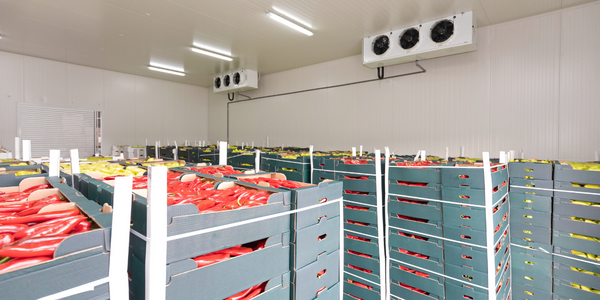Customer Company Size
Large Corporate
Region
- America
Country
- United States
Product
- Pavement Analyst™
- Maintenance Manager™
Implementation Scale
- Enterprise-wide Deployment
Impact Metrics
- Productivity Improvements
- Cost Savings
Technology Category
- Functional Applications - Remote Monitoring & Control Systems
Applicable Industries
- Transportation
Applicable Functions
- Maintenance
- Logistics & Transportation
Use Cases
- Asset Health Management (AHM)
- Infrastructure Inspection
Services
- System Integration
- Software Design & Engineering Services
About The Customer
The Texas Department of Transportation (TxDOT) is one of the largest transportation agencies in the United States. It manages the nation’s largest state-owned road network, which includes 200,000 lane miles of roadways supporting more than 500,000,000 daily vehicle miles traveled across 254 counties. The agency employs 12,000 people and operates in 25 geographical districts. In 2011, TxDOT began using AgileAssets® Maintenance Manager™ as its maintenance management system of record. Five years later, the agency moved to advance its asset management practices even further by deploying a state-of-the-art PMS, AgileAssets® Pavement Analyst™.
The Challenge
The Texas Department of Transportation (TxDOT) manages a vast network of roadways across 254 counties. In 2011, TxDOT began using AgileAssets® Maintenance Manager™ as its maintenance management system of record. Five years later, the agency moved to advance its asset management practices even further by deploying a state-of-the-art PMS, AgileAssets® Pavement Analyst™. However, these two solutions were implemented as separate systems, leading to a lack of data sharing between pavement management and maintenance management functions. The pavement management staff often lacked up-to-date information about pavement work history and work type. Efficiency lagged due to a lack of coordination between recommended work plans and actual maintenance projects.
The Solution
TxDOT integrated their separately deployed AgileAssets applications, Pavement Analyst™ and Maintenance Manager™. This integration enables the PMS to import the MMS data directly— tracking pavement maintenance activities and delivering ongoing visibility to both the pavement and maintenance teams. The pavement team can now import preselected roadway maintenance projects into their 4-year pavement management plans. The team can then prioritize other roads for treatment, or delay treatment on the roads where maintenance has been scheduled and will be sufficient to extend service life. The maintenance team can proceed confidently on the projects in the 4-year plan, knowing that preventive maintenance activities will not be superseded by rehabilitation projects on the same areas. The maintenance team can use the PMS to inform the planning of future maintenance work in areas not already covered by the 4-year plan.
Operational Impact

Case Study missing?
Start adding your own!
Register with your work email and create a new case study profile for your business.
Related Case Studies.

Case Study
Airport SCADA Systems Improve Service Levels
Modern airports are one of the busiest environments on Earth and rely on process automation equipment to ensure service operators achieve their KPIs. Increasingly airport SCADA systems are being used to control all aspects of the operation and associated facilities. This is because unplanned system downtime can cost dearly, both in terms of reduced revenues and the associated loss of customer satisfaction due to inevitable travel inconvenience and disruption.

Case Study
IoT-based Fleet Intelligence Innovation
Speed to market is precious for DRVR, a rapidly growing start-up company. With a business model dependent on reliable mobile data, managers were spending their lives trying to negotiate data roaming deals with mobile network operators in different countries. And, even then, service quality was a constant concern.

Case Study
Digitize Railway with Deutsche Bahn
To reduce maintenance costs and delay-causing failures for Deutsche Bahn. They need manual measurements by a position measurement system based on custom-made MEMS sensor clusters, which allow autonomous and continuous monitoring with wireless data transmission and long battery. They were looking for data pre-processing solution in the sensor and machine learning algorithms in the cloud so as to detect critical wear.

Case Study
Cold Chain Transportation and Refrigerated Fleet Management System
1) Create a digital connected transportation solution to retrofit cold chain trailers with real-time tracking and controls. 2) Prevent multi-million dollar losses due to theft or spoilage. 3) Deliver a digital chain-of-custody solution for door to door load monitoring and security. 4) Provide a trusted multi-fleet solution in a single application with granular data and access controls.

Case Study
Vehicle Fleet Analytics
Organizations frequently implement a maintenance strategy for their fleets of vehicles using a combination of time and usage based maintenance schedules. While effective as a whole, time and usage based schedules do not take into account driving patterns, environmental factors, and sensors currently deployed within the vehicle measuring crank voltage, ignition voltage, and acceleration, all of which have a significant influence on the overall health of the vehicle.In a typical fleet, a large percentage of road calls are related to electrical failure, with battery failure being a common cause. Battery failures result in unmet service agreement levels and costly re-adjustment of scheduled to provide replacement vehicles. To reduce the impact of unplanned maintenance, the transportation logistics company was interested in a trial of C3 Vehicle Fleet Analytics.

Case Study
3M Gains Real-Time Insight with Cloud Solution
The company has a long track record of innovative technology solutions. For example, 3M helps its customers optimize parking operations by automating fee collection and other processes. To improve support for this rapidly expanding segment, 3M needed to automate its own data collection and reporting. The company had recently purchased the assets of parking, tolling, and automatic license plate reader businesses, and required better insight into these acquisitions. Chad Reed, Global Business Manager for 3M Parking Systems, says, “With thousands of installations across the world, we couldn’t keep track of our software and hardware deployments, which made it difficult to understand our market penetration.” 3M wanted a tracking application that sales staff could use to get real-time information about the type and location of 3M products in parking lots and garages. So that it could be used on-site with potential customers, the solution would have to provide access to data anytime, anywhere, and from an array of mobile devices. Jason Fox, Mobile Application Architect at 3M, upped the ante by volunteering to deliver the new app in one weekend. For Fox and his team, these requirements meant turning to the cloud instead of an on-premises datacenter. “My first thought was to go directly to the cloud because we needed to provide access not only to our salespeople, but to resellers who didn’t have access to our internal network,” says Fox. “The cloud just seemed like a logical choice.”







